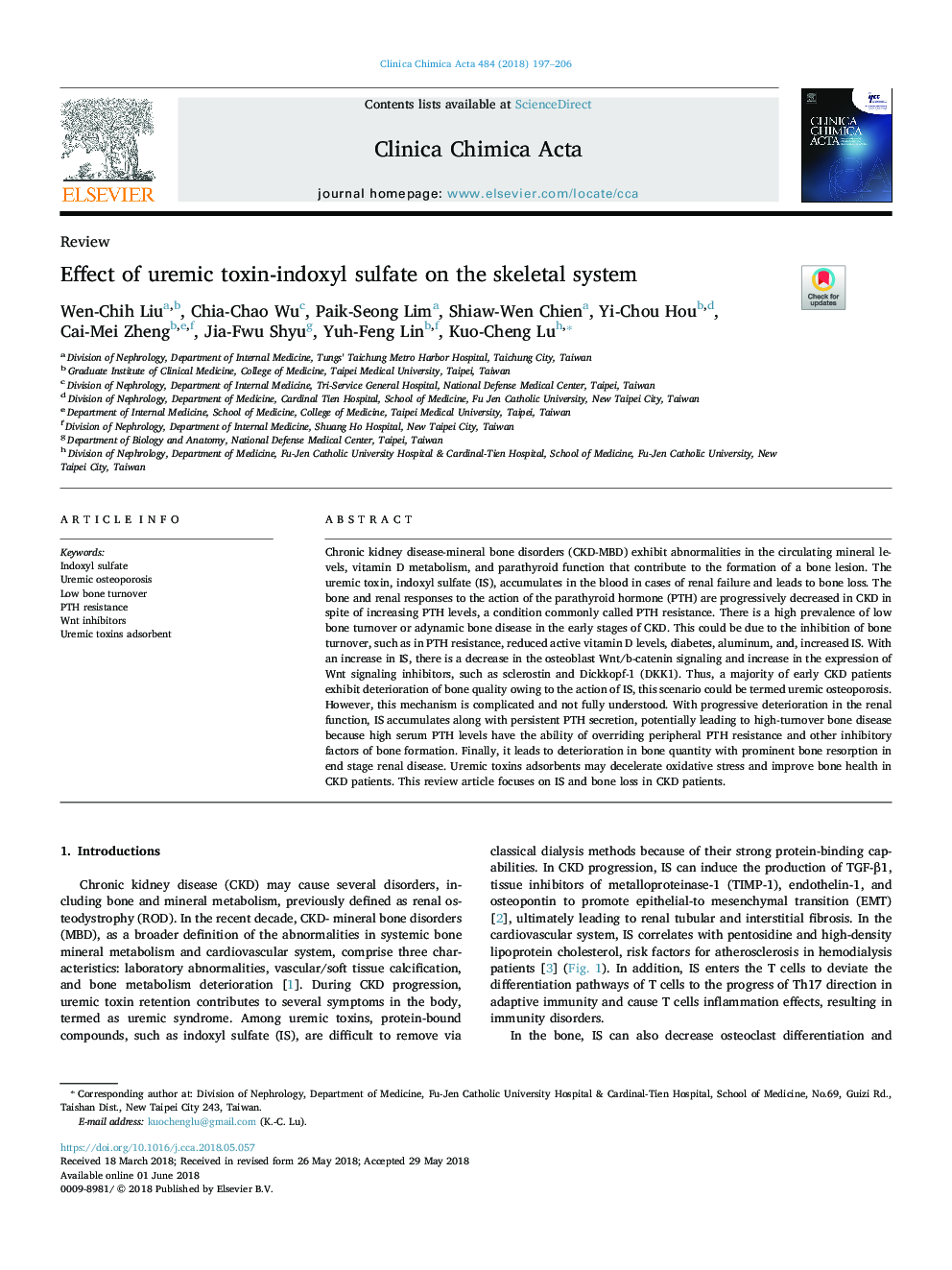| Article ID | Journal | Published Year | Pages | File Type |
|---|---|---|---|---|
| 8309420 | Clinica Chimica Acta | 2018 | 10 Pages |
Abstract
Chronic kidney disease-mineral bone disorders (CKD-MBD) exhibit abnormalities in the circulating mineral levels, vitamin D metabolism, and parathyroid function that contribute to the formation of a bone lesion. The uremic toxin, indoxyl sulfate (IS), accumulates in the blood in cases of renal failure and leads to bone loss. The bone and renal responses to the action of the parathyroid hormone (PTH) are progressively decreased in CKD in spite of increasing PTH levels, a condition commonly called PTH resistance. There is a high prevalence of low bone turnover or adynamic bone disease in the early stages of CKD. This could be due to the inhibition of bone turnover, such as in PTH resistance, reduced active vitamin D levels, diabetes, aluminum, and, increased IS. With an increase in IS, there is a decrease in the osteoblast Wnt/b-catenin signaling and increase in the expression of Wnt signaling inhibitors, such as sclerostin and Dickkopf-1 (DKK1). Thus, a majority of early CKD patients exhibit deterioration of bone quality owing to the action of IS, this scenario could be termed uremic osteoporosis. However, this mechanism is complicated and not fully understood. With progressive deterioration in the renal function, IS accumulates along with persistent PTH secretion, potentially leading to high-turnover bone disease because high serum PTH levels have the ability of overriding peripheral PTH resistance and other inhibitory factors of bone formation. Finally, it leads to deterioration in bone quantity with prominent bone resorption in end stage renal disease. Uremic toxins adsorbents may decelerate oxidative stress and improve bone health in CKD patients. This review article focuses on IS and bone loss in CKD patients.
Related Topics
Life Sciences
Biochemistry, Genetics and Molecular Biology
Biochemistry
Authors
Wen-Chih Liu, Chia-Chao Wu, Paik-Seong Lim, Shiaw-Wen Chien, Yi-Chou Hou, Cai-Mei Zheng, Jia-Fwu Shyu, Yuh-Feng Lin, Kuo-Cheng Lu,
